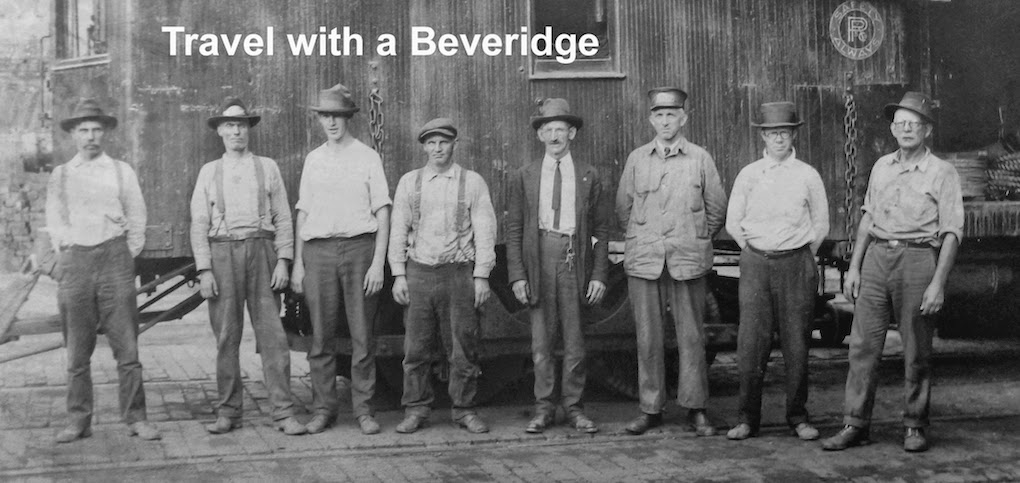Customers line up to buy collectibles dating to the 1950s and 60s from dealer Bess Dunlevy, organizer of Pittsburgh Vintage Mixer. (Scott Beveridge photo)
By Scott Beveridge
PITTSBURGH – Step aside 50-something-year-old antiques collectors, today's younger consumers aren't interested in your grandmothers' things.
Collectors in their 30s want everything you grew up around, from avocado kitchenware to gold-rimmed, frosted-glass cocktail sets popularized by Hollywood's glamor days in the 1950s, says Bess Dunlevy, a dealer who organized the first Pittsburgh Vintage Mixer.
"People are buying it," Dunlevy, a newspaper editor at the Observer-Reporter, said Sunday at the event in the New Hazlett Theater on Pittsburgh's North Side.
More than 600 people had come through the front doors within four hours after the urban hipster flea market opened with 22 dealers, making it such a success that the mixer likely will become an annual event, organizers said.
"They appreciate old objects. They last a long time and are aesthetically pleasing," Dunlevy said.
True to its 1950s and 60s theme, a disc jockey spun 45 rpm vinyl records at this happening party while a bartender mixed Bloody Marys for the afternoon cocktail set.
Disc jockey David Pohl provides the right music at the urban hipster flea market. (Scott Beveridge photo)
This crowd isn't much interested, either, in the ordinary food that made it to many dining room tables 50 years ago.
Outside the sale a food truck known as Franktuary sold delicious organic locally-produced grass-fed all-beef hot dogs.
Dunlevy said members of her generation who love everything mod are attracted to the look because it reminds them of their grandmothers. These young collectors also are influenced by the popular television show "Mad Men," a sexy drama set in New York in the 1960s, she said.
At Sunday's mixer, dealers' tables boast such items as a pair of 1960s women's pants made with red and white material sporting the Coca-Cola pattern and tableware bearing logos of such manufacturers as Glasbake, Pyrex, Melmac and Frostking.
"We sold a lot," Dunlevy said.
By Scott Beveridge
PITTSBURGH – Step aside 50-something-year-old antiques collectors, today's younger consumers aren't interested in your grandmothers' things.
Collectors in their 30s want everything you grew up around, from avocado kitchenware to gold-rimmed, frosted-glass cocktail sets popularized by Hollywood's glamor days in the 1950s, says Bess Dunlevy, a dealer who organized the first Pittsburgh Vintage Mixer.
"People are buying it," Dunlevy, a newspaper editor at the Observer-Reporter, said Sunday at the event in the New Hazlett Theater on Pittsburgh's North Side.
More than 600 people had come through the front doors within four hours after the urban hipster flea market opened with 22 dealers, making it such a success that the mixer likely will become an annual event, organizers said.
"They appreciate old objects. They last a long time and are aesthetically pleasing," Dunlevy said.
True to its 1950s and 60s theme, a disc jockey spun 45 rpm vinyl records at this happening party while a bartender mixed Bloody Marys for the afternoon cocktail set.
Disc jockey David Pohl provides the right music at the urban hipster flea market. (Scott Beveridge photo)
This crowd isn't much interested, either, in the ordinary food that made it to many dining room tables 50 years ago.
Outside the sale a food truck known as Franktuary sold delicious organic locally-produced grass-fed all-beef hot dogs.
Dunlevy said members of her generation who love everything mod are attracted to the look because it reminds them of their grandmothers. These young collectors also are influenced by the popular television show "Mad Men," a sexy drama set in New York in the 1960s, she said.
At Sunday's mixer, dealers' tables boast such items as a pair of 1960s women's pants made with red and white material sporting the Coca-Cola pattern and tableware bearing logos of such manufacturers as Glasbake, Pyrex, Melmac and Frostking.
"We sold a lot," Dunlevy said.









